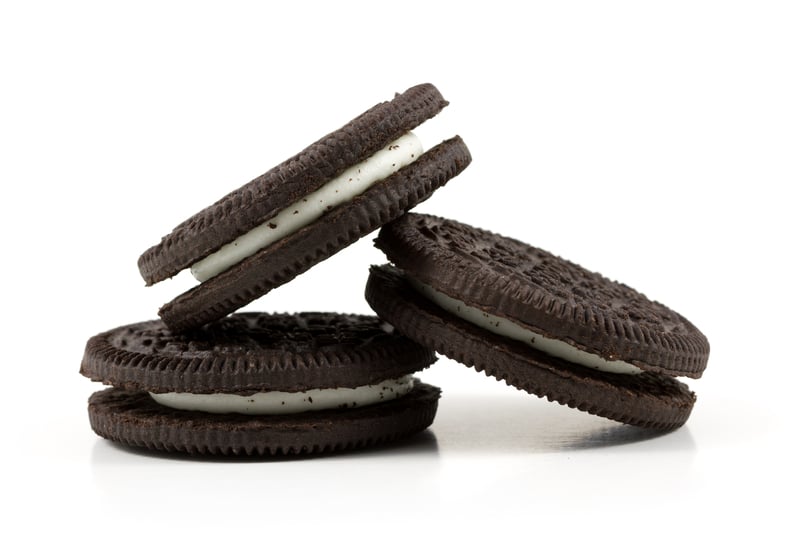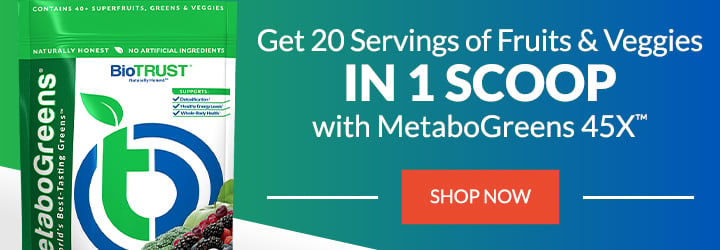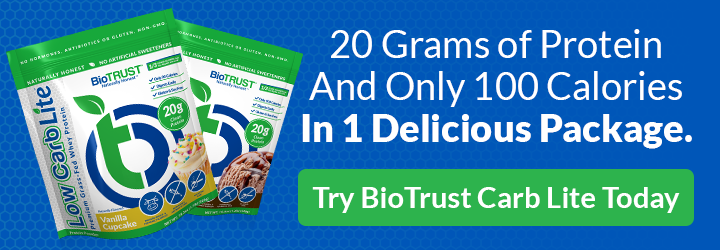See the Correct Portion Sizes of These 16 Snack Foods

Whether your goal is to improve health and fitness, lose weight, or gain energy and vitality, you’ve likely heard the importance of portion sizes. When it comes to individual foods (a serving of meat, vegetables, or starches like a potato), using your hand is one of the easiest ways to make sure you’re eating the right amount for you. But what about other foods? Snacks, for instance, are common.
Snacks can provide extra energy if you’re running low on fuel in the afternoon, or if dinner didn’t quite fill you up. Plus, it’s just fun to snack on, say, a bowl of popcorn during a movie or to take a break during a busy day with a friend or co-worker. In fact, according to surveys, around 58% of us snack at least once a day with 25% snacking even more often. Yet with many foods, portion sizes quickly get out of control.
So, what is the correct portion size for some of our favorite snacks?
For an easy way to visualize various serving sizes (without having to measure), here’s a quick guide:
- 1 tsp = the tip of your thumb
- 1 oz = about 2 dice
- 3 oz = about the size of your smart phone
- 2 Tbsp = about a ping pong ball
- ¼ cup = about the size of a large egg or a golf ball
- ½ cup = about a tennis ball
- 1 cup = about 1 closed fist or an average lightbulb
Now, let’s take a look at specific portion sizes for some of the most popular snacks:
The Correct Portion Size For These Popular Snacks
1. Cereal
Whether it’s late afternoon or closing in on bedtime, a lot of people find cereal to be a tempting snack. Ask any teenager, and you’ll likely hear that there are only a few servings in a full box of cereal. After all, one bowl isn’t likely to fill you up. However, a serving is only around 30 grams (or just ¾ of a cup), while a box contains around 180 grams. That means there are eight full servings per box, rather than just a few. How much cereal can you place in your cupped hand? That’s closer to an actual portion size than filling a cereal, or worse, soup bowl.
2. Cheese
Creamy, savory, and slightly sweet all at once. A slice of cheese is a quick, easy, and delicious snack. So delicious, it’s easy to go a little crazy with the portion sizes. For most varieties, though, a serving is just around 1 ½ ounces or about the size of four dice or the length of your index finger. At 150 to 165 calories per serving, a little cheese goes a long way. If you want more flavor, choose a stronger cheese, which can provide more of the taste you’re looking for without weighing you down.
3. Chocolate Bar
That smooth, creamy chocolate bar must contain just one serving—after all, it’s in a single package. Nope. A full-size bar contains several servings, as a serving size is just a 1-ounce (30-gram) chunk or a bit more than an inch of chocolate or two 2 x 4 Lego bricks.
4. Crackers
Another common snack food that’s super easy to overeat is crackers, especially when combined with a good cheese. (Amirite?) But depending on the type, a serving size is just between 4 and 10 crackers, which adds up to around 130 calories. (You will want to look at the label as there can be big differences between brands.) What about graham crackers? A serving size is just two large rectangles (or 8 small) rather than a sleeve.
5. Fresh Fruit
If you want something with a bit more volume, then fresh fruit is the way to go. A medium piece of many fruits (apples, pears, oranges) will be about the size of your closed fist or a tennis ball. Plus, 3 to 5 servings of fruit per day are recommended, and one piece only provides between 80 and 100 calories and is more likely to fill you up and keep you going due to the high fiber and water content. Yep, as expected fresh fruit is a great snack any time of day!
6. Fresh Veggies
One great way to snack is to enjoy fresh chopped raw vegetables. Again, you can get a big serving size that’s low in calories, high in nutrients, and quite satisfying. A one-cup serving of chopped veggies is around the size of your clenched fist or a baseball.
7. Granola
If you eat a bowlful of granola, it’s super easy go overboard. A serving of granola is just ¼ cup or around the center of your palm or a golf ball. In other words, it’s better as a topping than a snack. If you want granola, go for it. Just sprinkle it over some plain Greek yogurt with fresh fruit mixed in for something that’s more likely to satisfy you rather than just provide extra calories.
8. Hummus
Because it’s often served with fresh vegetables, it can sometimes feel like a container of hummus (or at least a full bowl) is a single serving. Nope, and this explains why people tend to chronically overeat this healthy food. A serving of hummus is just two tablespoons or about the size of your two thumbs together, which provides around 70 calories with 2 grams of fiber and 2 grams of protein.
9. Ice Cream
On a hot day, many of us seek out something cold and sweet, which is why ice cream is a common summer snack. A serving, however, isn’t a big bowl. Instead, it’s a 2.5-inch scoop or about a half cup. That’s slightly smaller than a tennis ball and provides right around 200 calories. If you’re looking for something that’s a little leaner and higher in protein, Coach Cristina has you covered with a simple, tasty recipe perfect for the dog days of summer that drops the calorie count down to 146 and adds 18 grams of protein.
10. Jelly Beans
Looking for something sweet, chewy, and colorful? It can be tempting to just grab a handful of jelly beans (likely followed by another). But a single serving is just 10 small jelly beans. Fortunately, this serving size is only around 92 calories and should be plenty to indulge your sweet tooth as long as you don’t leave a candy dish in easy reach.
11. Nuts
Nuts are a healthy, filling, highly nutritious snack. And there are many reasons to include them in your diet. That said, nuts are also very high in calories, which is why it’s important to eat them in moderation. A serving size of nuts isn’t a full handful. Instead, it’s just one ounce of whole nuts, which is just about a ¼ cup or around the size of an egg.
12. Peanut (or Other Nut) Butters
Peanut butter (as well as other nut butters) is another common food used in snacks that is easy to overconsume. First, the good. It’s one of the most affordable forms of plant protein, providing 7 grams per serving along with 2 grams of fiber. The less good. It’s high in calories (190 per serving) with a quarter of the recommended daily intake for fat (16 grams). Still, the good outweighs any drawbacks.
Just remember, a little goes a long way when it comes to nut butters. A serving size is just two tablespoons or about the size of a ping-pong ball. Even then, it’s easy to overdo it. A full tablespoon means you’ll still see the outer edges of the spoon. If your spoon is overflowing, that’s probably two tablespoons, even if it fits onto just one spoon.
13. Popcorn
There’s a huge variation between types of popcorn. For example, you can have microwaved popcorn, buttered movie popcorn, or air-popped popcorn. A serving of some popular microwaved popcorn can add up to between 140 and 180 calories. Popcorn popped in oil is usually between 160 and 170 calories—butter toppings add another 100 calories.
Air-popped popcorn, on the other hand, provides just 93 calories. Better yet, there’s a lot of volume in popcorn as a serving size is between 3 and 4 cups—which is a heaping bowl. It also provides 3.6 grams of filling fiber as well as 3 grams of protein and just .2 grams of sugars, as long as you don’t add butter, oil, or other high-calorie topping.
If plain popcorn isn’t to your liking, though, there are a lot of options to dress up your popcorn for a delicious, filling, and flavorful snack any time during the day or night.
14. Potato Chips
When it comes to cravings for something crisp, is there anything better than chips? Especially the old favorite stackable chips found in a can? Nope, that whole can isn’t one serving as it provides over 1,000 calories. Ouch! So, what’s a single serving of chips? Just 14 crisps, which provides around 154 calories, and is about the size of the palm of your hand or a deck of cards.
15. Raisins (and other dried fruits)
Because raisins and other dried fruits have long been believed to be a healthy snack, many of us can get pretty generous with our portion sizes. But dried fruit packs in a lot of calories (and sugar) in a small space. If you stick to a single serving, which is around one ounce (40 – 50 grams), you’ll consume around 129 calories. Fortunately, this little sweet snack can often be found in single-serve small boxes that are easy to take with you. If you buy a bag instead, then a serving is no more than ¼ cup or around the size of the center of your cupped palm or about the size of a golf ball.
16. Sandwich Cookies
Cookies and milk are a quintessential snack, at least for children. But some of us never outgrew our taste for this treat. Cookies can be part of a healthy diet—as long as they fit into your daily calorie and macro count and, of course, you don’t sit down and eat the entire plate, box, etc. A serving size is just three little cookies. So, if this is your snack for the day, pour yourself a half cup of milk (your favorite milk substitute) and serve it with just three cookies. The cookies provide around 160 calories with small amounts of protein (~2 grams) and fiber (~1 gram) and loads of sugar (~14 grams). To help your cookie treat go a lot further and provide more nutrition and satisfaction, consider topping a serving of Greek yogurt with some fresh fruit and then sprinkling a cookie or two over the top.
Keeping Your Snack Portion Size in Control
Whichever snack you choose, forget about eating directly from the bag, box, or package. Instead, measure the appropriate serving size onto a plate, small bag, or bowl, and put away your snack food before you sit down to eat it. Alternatively, you can separate out servings immediately when you get home from the store into individual containers, so it’s easy to grab a snack when you’re on the go.
Then go ahead and truly enjoy your snack by stepping away from the computer or smart phone for a couple of minutes to eat mindfully. This simple technique is a great way to learn to eat the right serving size for you while increasing your enjoyment and satisfaction.





 7 Signs Your Body is Seriously Low on Collagen (not just wrinkles)
7 Signs Your Body is Seriously Low on Collagen (not just wrinkles) Health Expert: "Turmeric Doesn't Work (unless...)"
Health Expert: "Turmeric Doesn't Work (unless...)" 3 Warning Signs Your Probiotic Supplement is a Total Waste
3 Warning Signs Your Probiotic Supplement is a Total Waste

